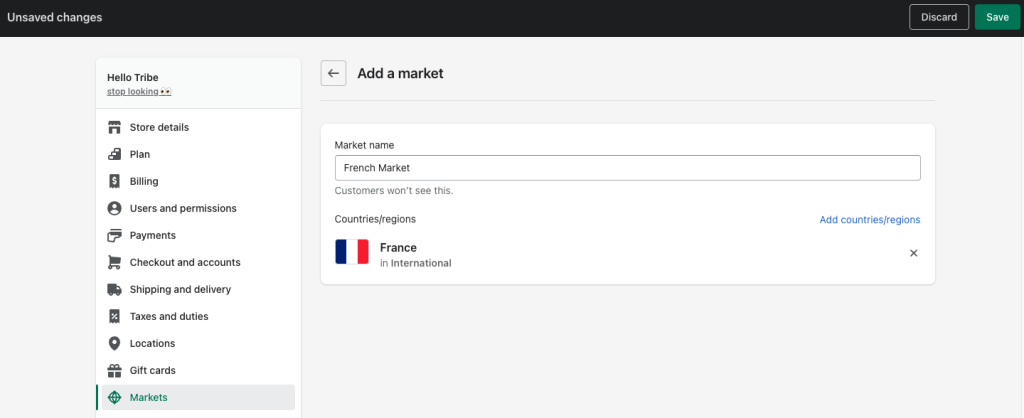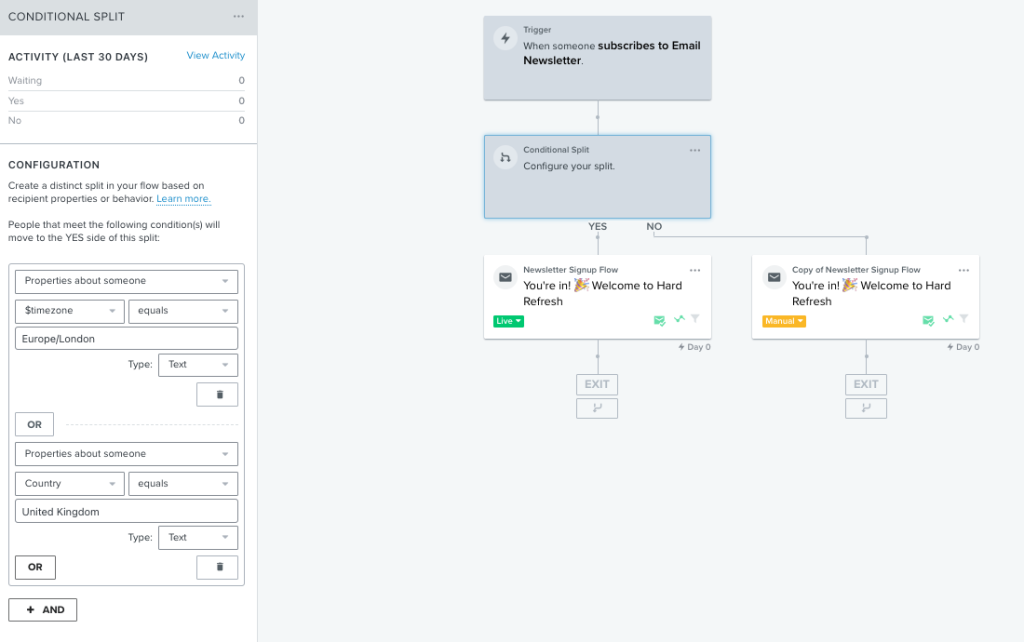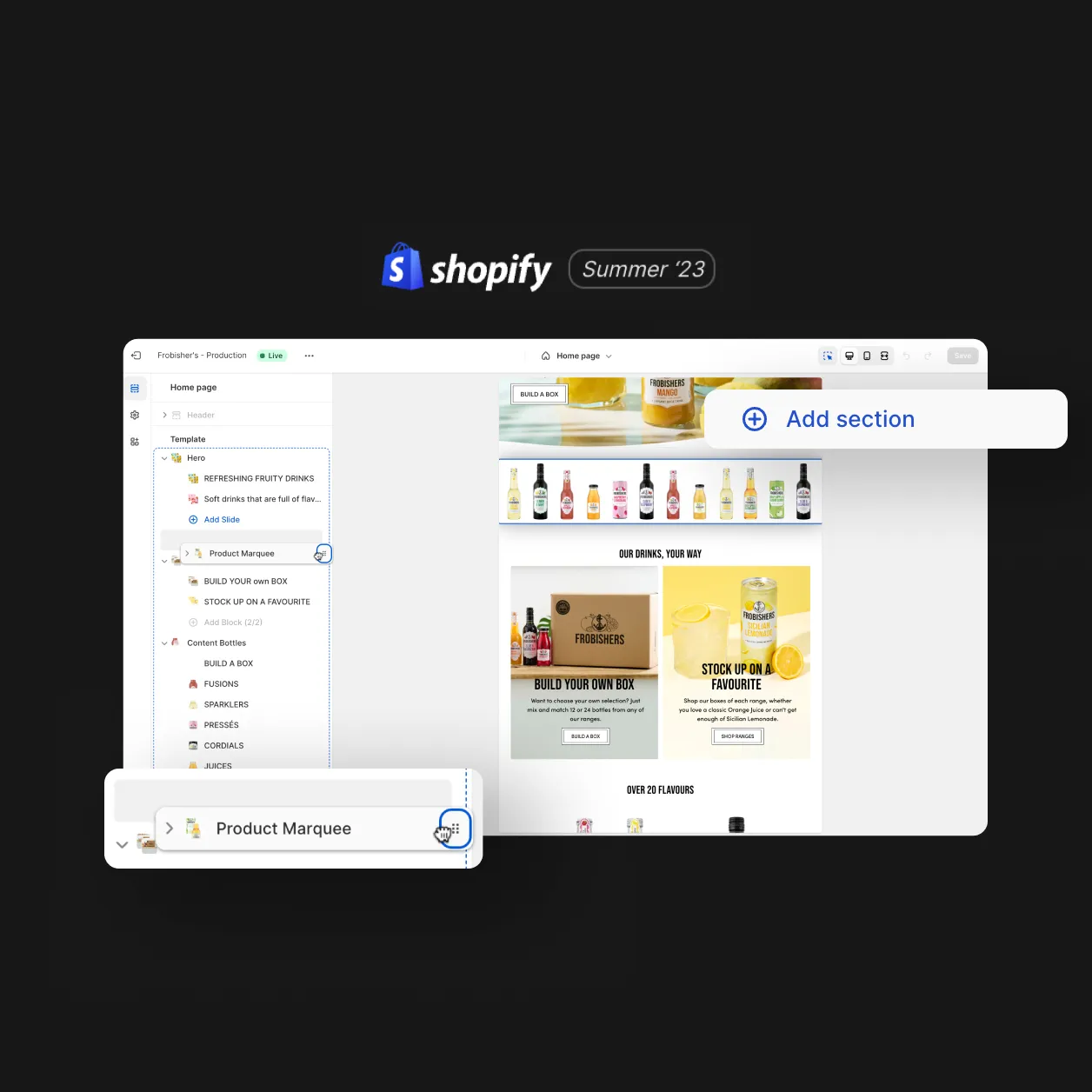
Going global can be overwhelming for any business, there are plenty of factors to consider such as; shipping, warehousing, taxes, laws, packaging, team structure and data segmentation. But don’t let that discourage you! Venturing into cross-border commerce can be an exciting opportunity for your brand’s growth.
In this post, we’ll delve into the avenues for taking your business global with Shopify with attention paid to your two options:
1) Shopify Markets (using a single store)
2) Expansion stores (using multiple stores)
In this article, I will explore the advantages and disadvantages of both options to help brands make an informed decision when considering their e-commerce internationalisation strategy.
When Expansion stores is better than Shopify markets?
The challenges: Shopify Markets vs. Expansion Stores
Jump to these blocks of content by clicking on the links above.
Shopify Markets
Shopify Markets simplifies the internationalisation process for e-commerce businesses by offering a single-store route. This allows managing various aspects of cross-border commerce from one Shopify store. With this feature, one can handle multiple currencies, display different prices per market, manage local domains, show the correct currency and language based on the buyer’s location, and control duties and import taxes.
In addition to streamlining backend functions, Shopify Markets offers a localised experience for international customers. Customers can view translated content, region-specific checkout forms, and more. This allows businesses to interact with their customers in their regions, increasing brand awareness and global scalability.
While Shopify Markets is available on all Shopify price plans and has made cross-border e-commerce more accessible and affordable, it is not a one-size-fits-all solution. International growth can be a complex task that affects every aspect of a business. Therefore, in some cases, it may be more appropriate to have multiple separate stores instead of using Shopify Markets. To access Shopify Markets, go to Admin > Settings > Markets.

Shopify Plus: Expansion stores
Expanding your e-commerce business globally on Shopify Plus used to require a multi-store approach called expansion stores. These are separate Shopify stores that operate independently from one another. This structure enables your brand to comply with region-specific regulations and requirements in different markets.
Shopify Plus users can have up to 10 stores (9 expansion stores + their main store). But if you’re on a Shopify Advanced Plan, your costs will be duplicated per store. It is also worth considering the additional cost of doubling/tripling your tech stack costs.
Having multiple stores can give you more control and flexibility, especially if you offer different products, price points, and promotions in various regions. For example, you might have different price points per market, tone of voice could differ between regions, and even blog content might be toned up or down.
While expansion stores offer endless possibilities and flexibility, they can also bring significant complexities and are therefore best suited to well-resourced teams. Managing multiple stores requires more time, and you’ll incur higher tech stack costs and duplicated integrations to ERP. You’ll also need to migrate themes, data, and content to a new store, and have a bank account in the store’s currency.
However, with the launch of Shopify Markets, e-commerce internationalisation has become more accessible. Brands can now test new markets without committing to the extensive requirements of a multi-store approach. This is especially beneficial for those who are testing the waters and don’t want to risk too much.
The challenges of Shopify Markets and Expansion Stores
| Shopify Markets considerations | Expansion Stores considerations |
| Manage multiple currencies | Increased time administering the stores |
| and manage local domains | leads to higher-tech stack costs and |
| allowing markets to display different prices | integrations are duplicated |
| where buyer location can determine language and currency | with a requirement for a duplicate of the code base (theme and content) for the new store |
| giving you control over duties and import taxes | and for that store’s bank account to be in the store’s currency |
When Expansion stores is better than Shopify markets?
Read on to see when we would suggest using expansion stores instead of Shopify Markets.
Full localisation of a store
If you desire complete localization of your store, such as the capability to produce highly market-specific content or campaigns, it’s advisable to contemplate Expansion stores.
Merchant payouts required in the local currency
If you require payments to be made in GBP for your UK store and EURO for your German store, it is presently not feasible with Shopify Markets and would necessitate the use of expansion stores – however, Shopify plans to eliminate this constraint in the future.
When greater price, tax and inventory rules are required
For businesses with intricate regulations concerning these aspects, we would suggest contemplating expansion stores. An instance of this could be managing a UK and US product catalogue with differing prices, shipping rules and tax requirements on one but not the other.
Coupons, discounts and the promotion of products
If you’re looking for greater flexibility in your promotional campaigns and need to create region-specific discounts and promotions, you may want to consider utilising expansion stores. Shopify Markets, while effective in applying discounts and promotions to all regions at once, may not offer the level of customization that you require for your marketing strategy.
Third-party app compatibility
As Shopify Markets is a proprietary solution from Shopify, it may not support all third-party apps. It is recommended that you assess the compatibility of your critical third-party apps with Shopify Markets, particularly if your store relies heavily on them for important functionality. If your apps are not fully compatible or the limitations of their compatibility are too significant, it may be necessary to consider using expansion stores as an alternative.
Translating email automation per locality
Translating emails can be a challenging task compared to translating the front end of a website. To translate an email, it needs to be sent through Klaviyo. We’ve outlined how this can be achieved through segmenting users ‘properties about someone’ by either timezone or country below.

If Klaviyo is not an option for sending emails, it won’t be possible to translate them, except for Shopify transaction emails that can be translated using Shopify’s Translate and Adapt app.
One workaround is to include multiple languages in the email body. However, this approach may be limited by third-party tools that send emails to customers, such as those for review requests after purchase. If you prefer not to send emails in multiple languages and cannot use Klaviyo to send them, expansion stores may be the solution for you.
Independently managed regions
When it comes to managing market regions, some businesses may have different teams responsible for different regions. In such cases, using expansion stores can provide significant benefits. By utilising expansion stores, businesses can create separate storefronts for each market region, giving independent teams control over the specific products, pricing, and promotions within their respective regions.
This approach can help teams maintain autonomy and streamline their workflow. With separate expansion stores, teams can make changes and adjustments to their market regions without affecting other regions. This level of flexibility is particularly important in cases where regional markets have unique demands, regulations, or cultural preferences.
Additionally, utilizing expansion stores can provide businesses with more targeted and effective marketing strategies. By tailoring their storefronts to specific market regions, businesses can create campaigns and promotions that are relevant and appealing to customers in those regions. This approach can help increase customer engagement and loyalty, ultimately leading to increased revenue and business growth.
Shopify Payments is not available in a region
The functionality of Shopify Markets is heavily dependent on the availability of Shopify Payments. Unfortunately, Shopify Payments is not yet available in all regions, for example, it is not supported in Belgium.
If your business is based in a region where Shopify Payments is either, not available or due to regulatory issues your products cannot be sold (ie CBD products), you may encounter significant limitations in the functionality of Shopify Markets. In such cases, opting for a multi-store approach may be the most viable option to ensure that your business operates seamlessly across all regions.
With a multi-store approach, you can create separate storefronts for each region and utilise payment options that are available in each respective region, providing your customers with a seamless shopping experience regardless of their location.
Summary
In conclusion, both Shopify Markets and expansion stores offer unique advantages to businesses looking to expand into new markets. Shopify Markets is a streamlined approach with centralized inventory management and integrated payment processing, while expansion stores offer flexibility and tailored storefronts. The choice between the two options depends on the specific needs and goals of your business. By considering your priorities, you can make an informed decision that aligns with your growth strategy. Ultimately, Shopify provides a scalable platform to help you succeed in e-commerce.
Design
Inspiring behaviour change through visual experiences. Our digital design services ensure instant clarity and visuals that cut-through in a cluttered market.




